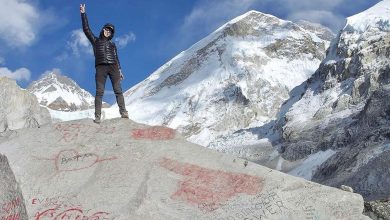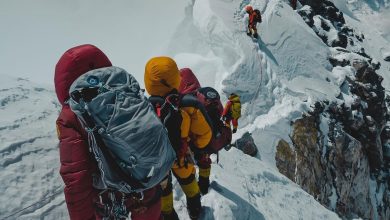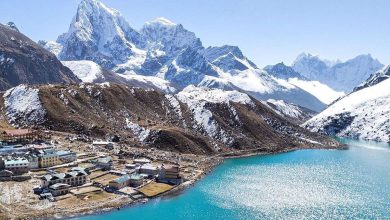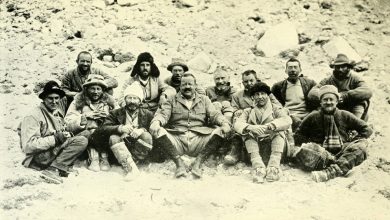Conquer the Everest Base Camp Trek in 12 Days – A Journey of Legends!
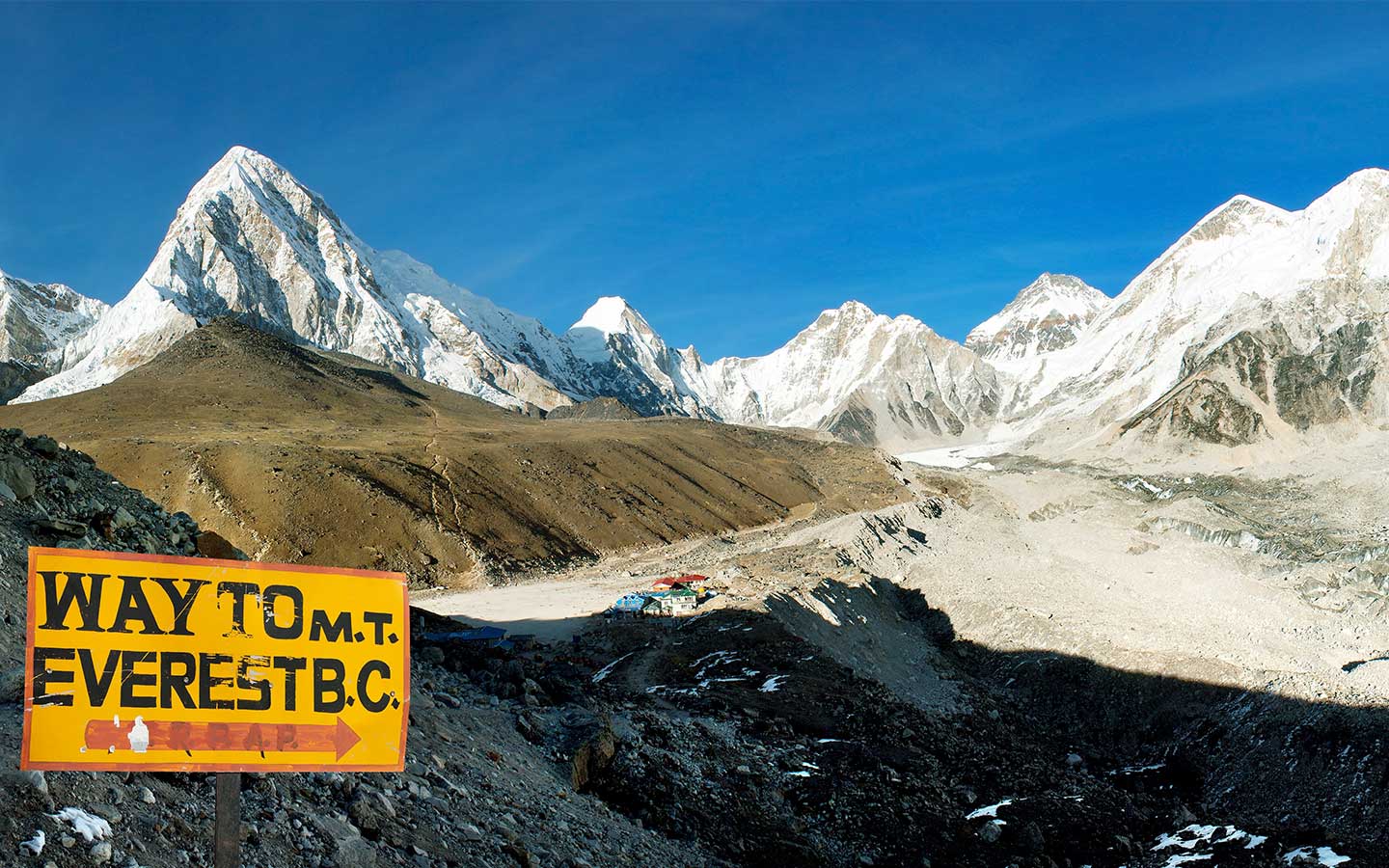
Nepal, the name is unfamiliar among many people of the world, but the name Everest is popular among the trekking enthusiasts. Mount Everest rests on the northern mountainous part of Nepal in the Everest region. And Everest Base Camp trek takes you to the lap of this highest peak in the world.
In general, you can do the Everest Base Camp trek in 14 days which includes 2 acclimatization days as well. However, as per your convenience, you can plan your own itinerary as well. You can plan how long you wish to spend on this trekking trail in the Everest region.
Whichever itinerary you follow all you get is to explore the diverse culture, nature, geography of the Everest region. The typical Sherpa people, their Tibet-influenced culture and traditions, their Buddhist practices will keep you accompanied in the trek.
You also get to delve into the several monasteries, and chortens and walk past the Mani walls and Prayer flags to reach your dream destination- the Everest Base Camp.
This high-altitude trek to EBC is doable all year round, but, Autumn and Spring are the peak season for the trek. You will collect the finest trekking memories during this time.
But since the mountain weather is unpredictable you must come prepared for any physical and mental problems. With enough preparation and proper packing this trek is doable and will be your lifetime memory as well.

Highlights of Everest Base Camp Trek
- Walk into the base of the world’s highest peak Mt. Everest (8848 meters) at 5346 meters from sea level.
- Step into the most popular vantage point Kala Patthar (5555 meters) to catch the finest glimpse of Everest.
- Walk through the diverse flora and fauna of Sagarmatha National Park
- Collect blessings from the oldest monastery of the Khumbu region, Tengboche monastery.
- Walk past the stunning icefalls, Khumbu glacier, and icicles on the way to the base camp.
- Take an adventurous stroll around the glacial lakes and Gokyo Ri in the Gokyo valley
- Connect with the local Sherpa people of the Khumbu region.
- Do some shopping in the popular business hub of Khumbu region, Namche Bazar
- Take an electrifying flight from Kathmandu – Lukla. Lukla airport is among the world’s dangerous airport.
- Do some interaction with those mountaineers preparing for the Everest, or Island Peak, or Mera Peak, or Lobuche Peak.
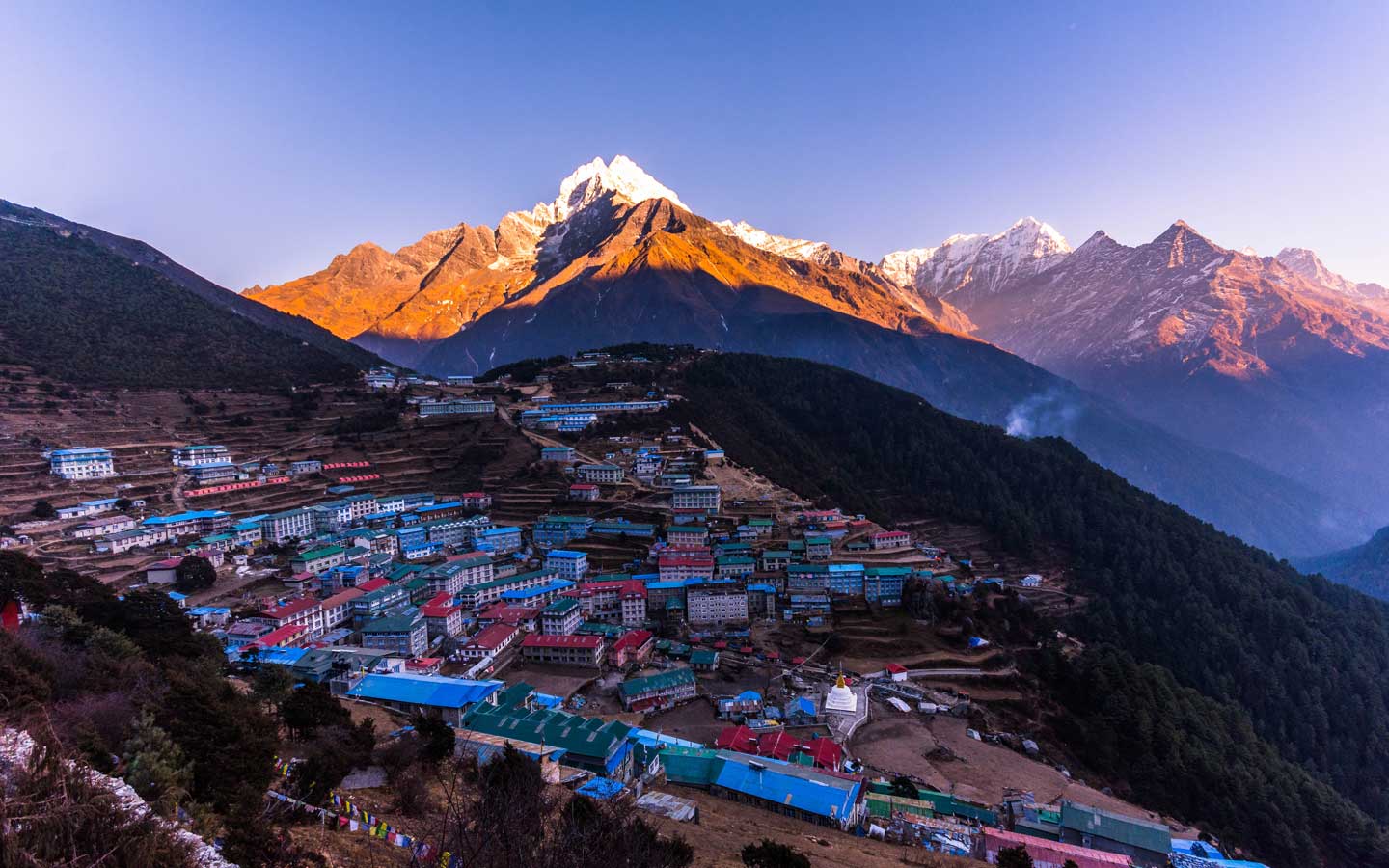
Everest Base Camp Trek Itinerary
You can go on standard Everest Base Camp trek in 14 days. But the itinerary is customizable. You can either extra days to your trek or you can cut-off trek days.
You can plan your own itinerary as per your convenience. You can also complete the trek in 11 days or extend it to even 19 days as well. The number of days you will be spending on the trek depends on your trek preference and convenience.
Despite the number of trekking days, you must get the necessary permits for EBC trek once you are here in Kathmandu. While in the city, you need to obtain the necessary permits for the trek.
If you are a solo trekker you need to arrange the permits by yourself. But if you are trekking through a travel company, they will arrange all the permits and complete the legal formalities for you.
Here’s a standard 14 days detailed itinerary for the Everest Base Camp Trek.
Day 01- Kathmandu – Lukla – Phakding
Altitude: 2804 meters, Phakding
Flight duration: 45 minutes
Trek duration: 4-5 hours
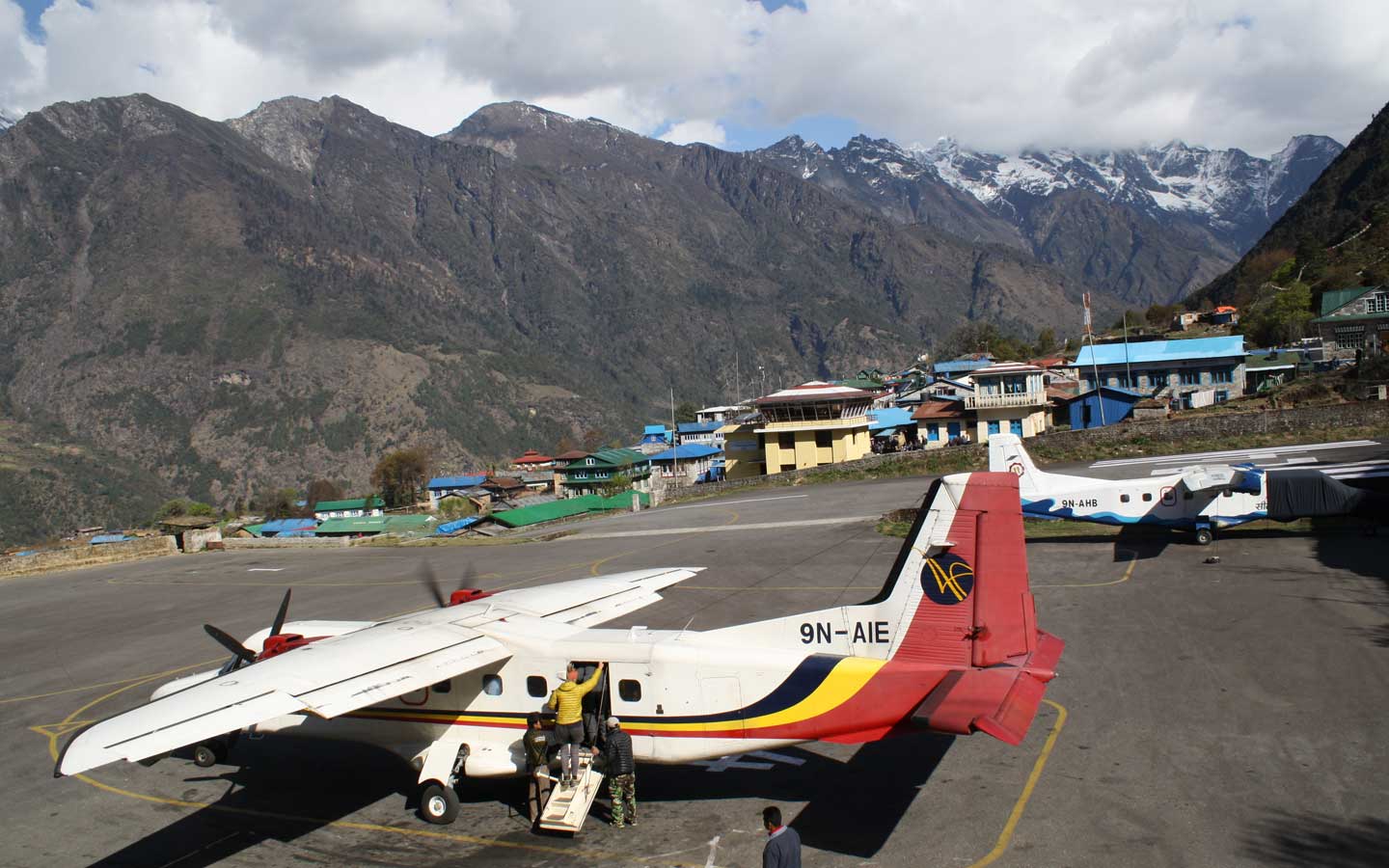
After morning breakfast, you will leave the airport to catch a 45 minutes flight to Lukla. The flight is among the electrifying flights in the world. You will get to enjoy the first view of the mountains and amazing views of the Everest region.
This scenic flight lands at Lukla from where your actual trek starts. You climb downhill to Phakding for about 4-5 hours for an overnight stay.
Day 02- Phakding – Namche Bazaar
Altitude: 3441 meters, Namche Bazar
Trek Duration: 6-7 hours
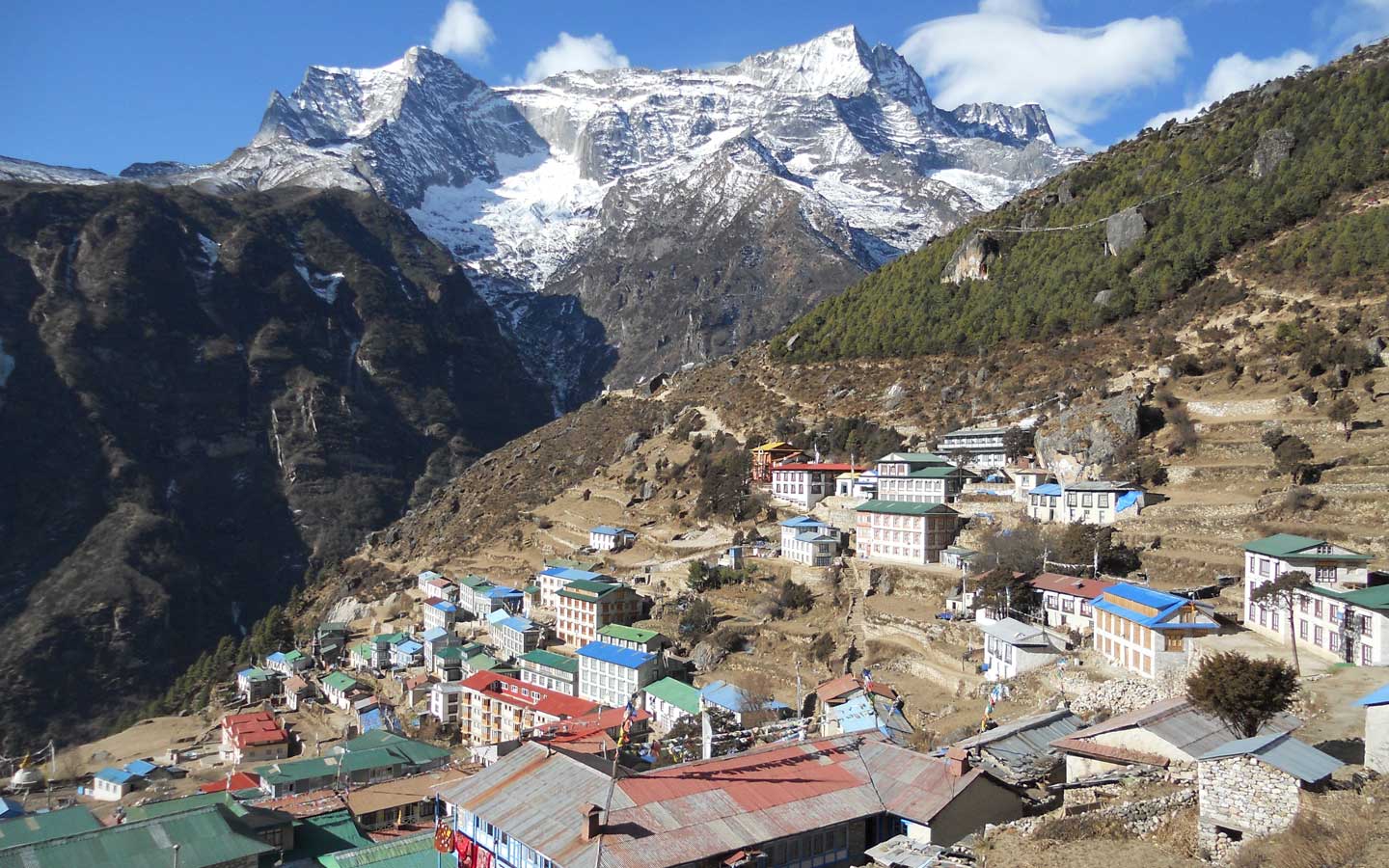
The next morning you will enjoy a warm meal at Phakding and leave for Namche Bazaar. On walking across the bank of Dudh Koshi river and crossing several suspension bridges you will reach Namche in around 6-7 hours.
On this day you will enter Sagarmatha National Park where you need to verify your permits to enter the region. On walking past the lush forests of rhododendrons you will finally reach this popular town of the Everest region.
There are enough hotels and lodges for your overnight stay.
Day 03- Rest Day at Namche Bazaar
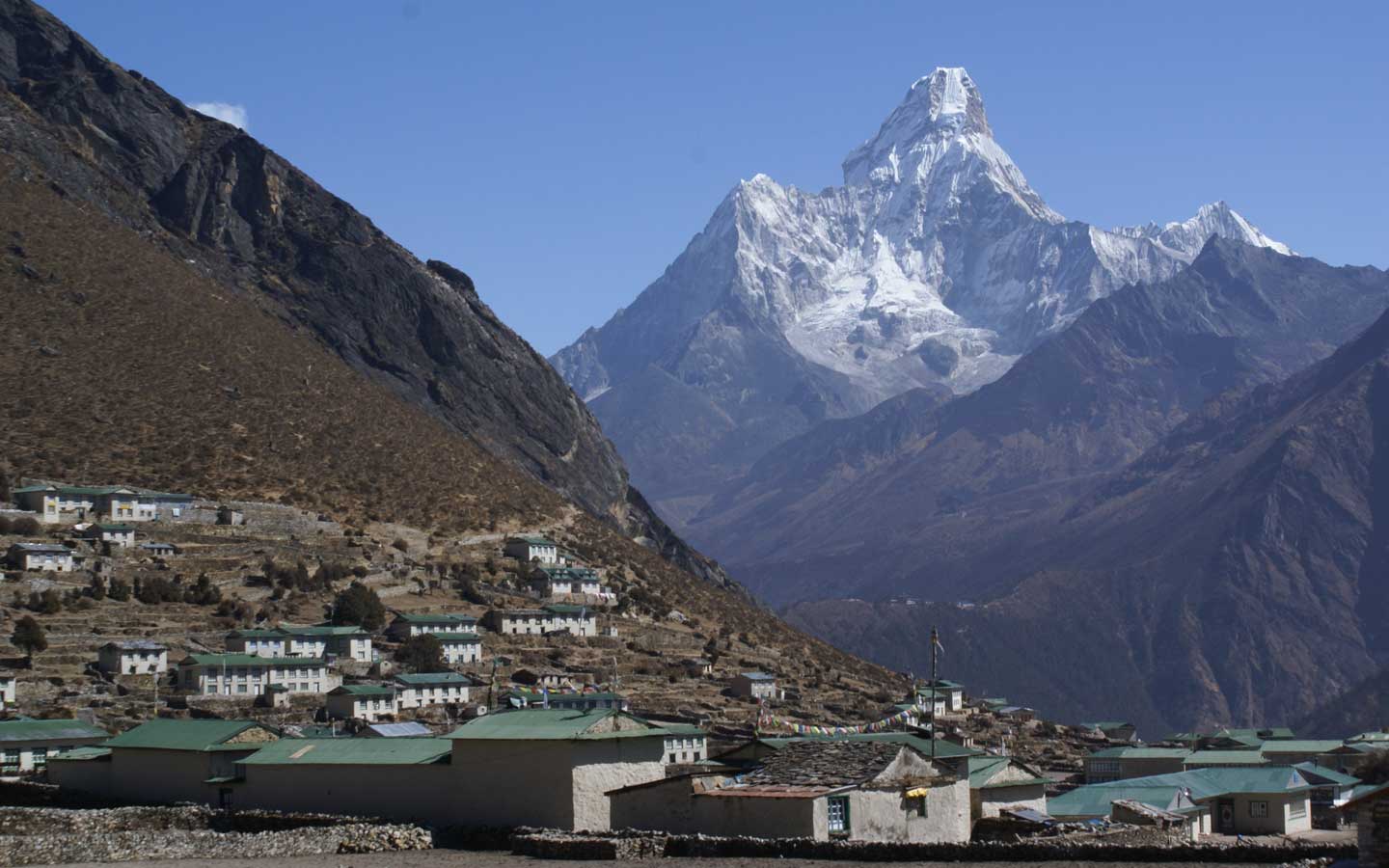
Since altitude is the major concern during this trek, you will be spending a rest day at Namche Bazaar.
If the weather is clear you will catch the first views of Mt. Everest and its neighboring peaks from Namche Bazaar. On this acclimatization day, you will be taking short strolls around the nearby villages like Khunde and Khumjung.
You will get a chance of a closer encounter with the Sherpa people of the region and their lifestyles. Plus, you can also visit a school constructed by Sir Edmund Hillary and get to know about its present conditions.
In the evening you can walk around the market of Namche Bazaar and do some shopping.
Day 04- Namche Bazar – Tengboche
Altitude: 3860 meters
Trek Duration: 5-6 hours
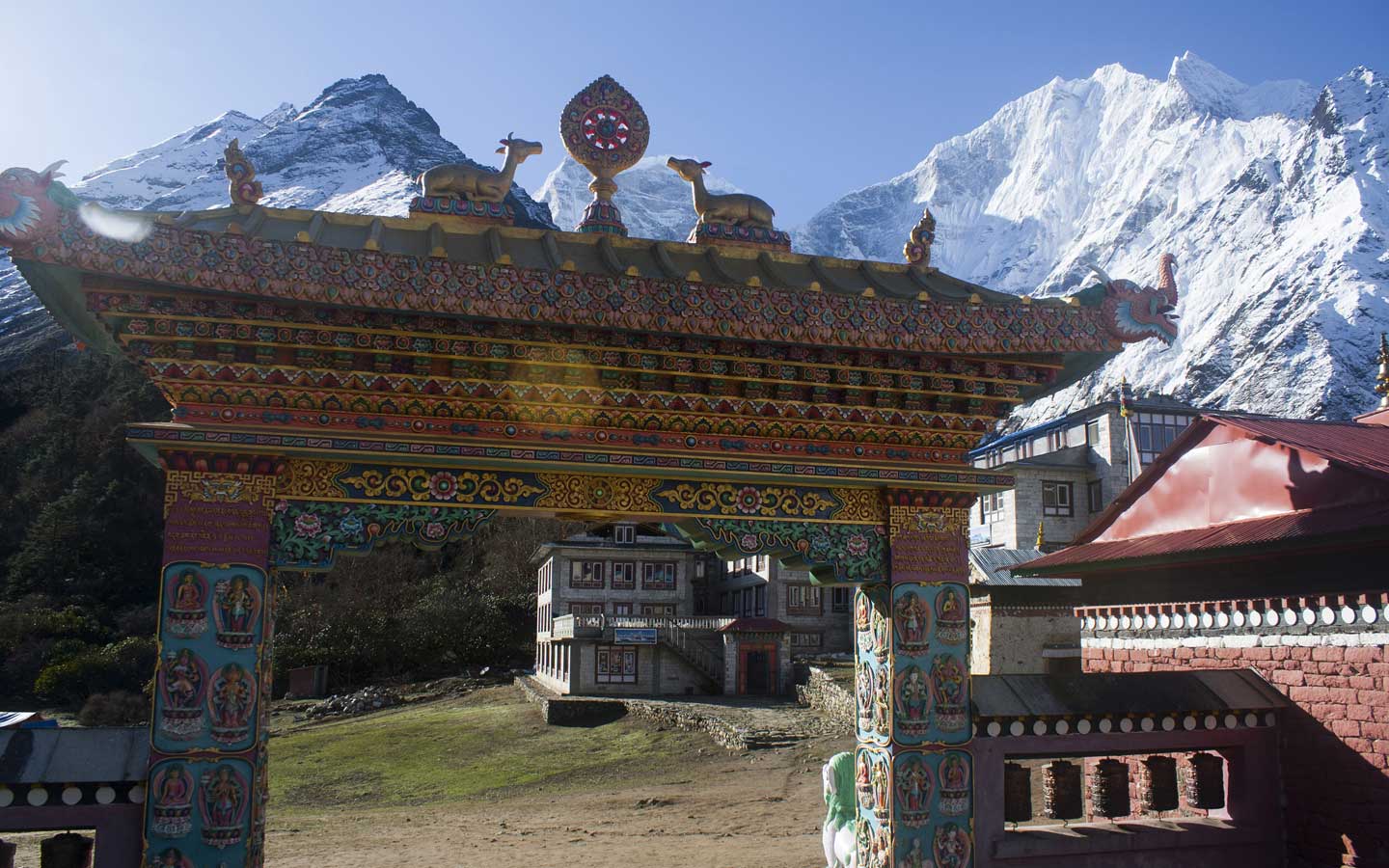
Breakfast the next day and you will start your trek of the day. Bidding farewell to the Namche Bazaar you will start ascending towards Tengboche.
On this day, you will walk to the Tengboche monastery- the oldest monastery of the region. Plus, if you trek during the expedition season, you will encounter many mountaineers. They come to take blessings in the monastery for their successful climb to the summit.
Also, on clear days the monastery offers the panoramic views of the chain of Himalayas in the Everest region. There are enough tea houses on the monastery premises for your overnight stay.
Day 05- Tengboche – Dingboche
Altitude: 4400 meters, Dingboche
Trek Duration: 5-6 hours
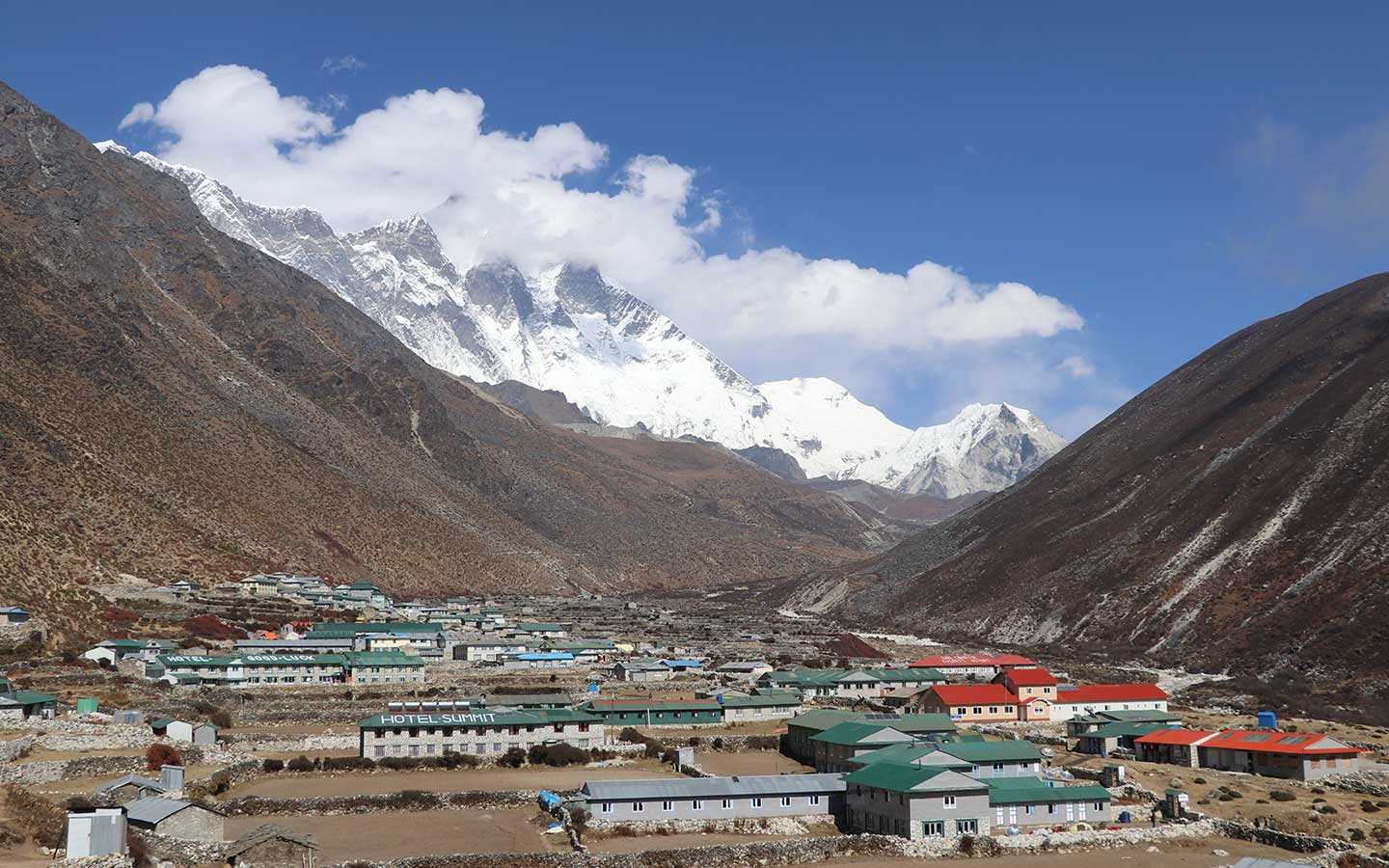
Collecting the blessings at the monastery you will leave for the next destination after breakfast on the next day. You will start to ascend to altitudes above 4000 meters so you must walk slowly and take proper rest.
You cross several rocky trails and boulders to catch a view of a small village on the lap of Ama Dablam– Dingboche village. The small village on the lap of mountains and on the neighborhood of rivulets and streams has limited teahouses for your overnight stay.
So, it is a good idea to pre-book rooms. Overnight stay at Dingboche.
Day 06- Acclimatization day
Altitude: 4710 meters, Nagarjuna Hill
Hike duration: 4-5 hours
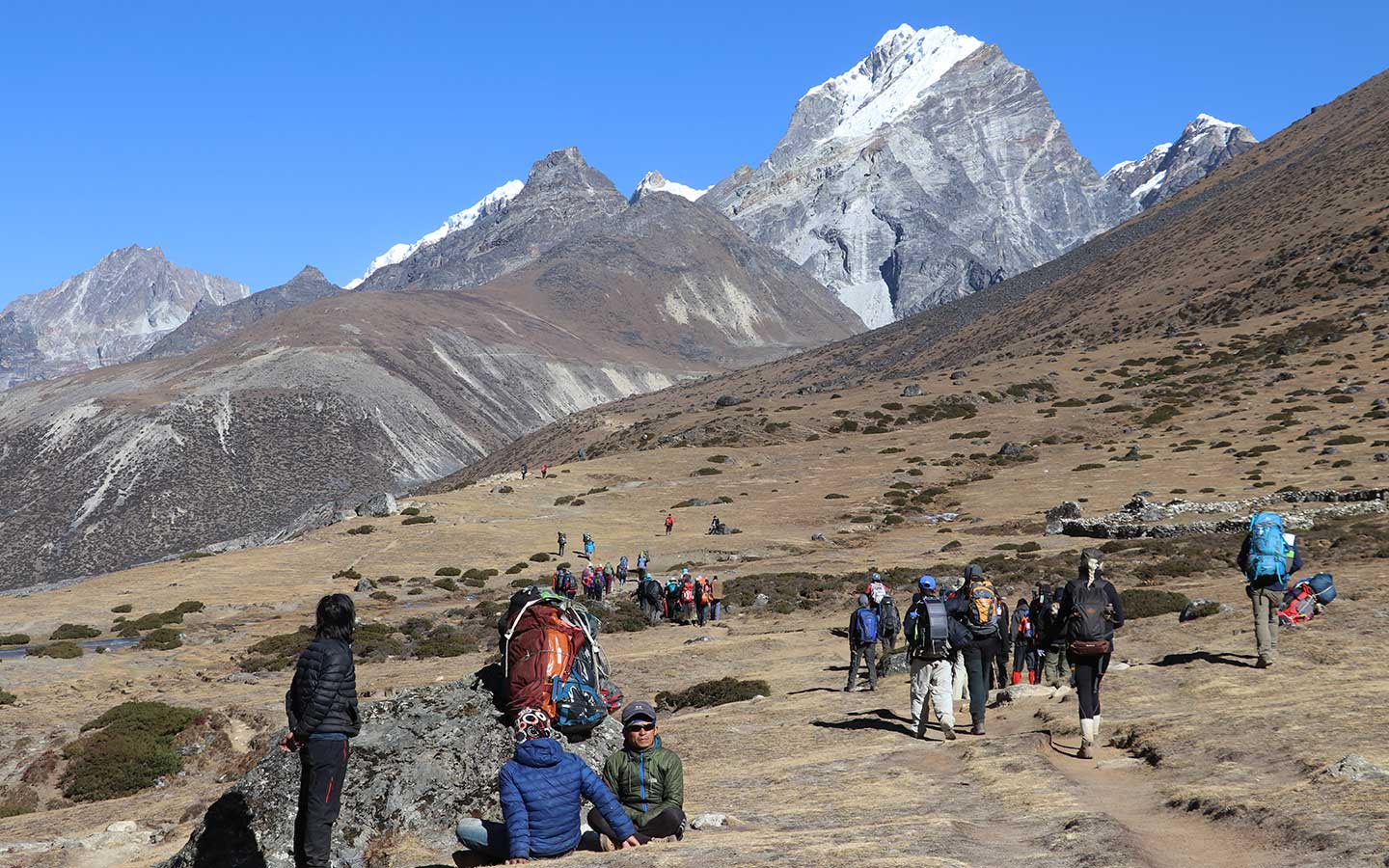
This is the second day of rest during your 14 days Everest Base Camp trek. On this day you will spend time exploring the village, hike to the nearby hillocks like Nagarjuna Hill.
This scenic hike will offer you the closest views of the Everest, Nuptse, Lhotse, Ama Dablam, and other peaks.
Or, you can hike to Chukung Ri to catch the best view of Island Peak and the mountaineers busy in climbing Island Peak. You will spend the night in the same teahouse at Dingboche.
Day 07- Dingboche – Lobuche
Altitude: 4900 meters, Lobuche
Trek Duration: 4-5 hours
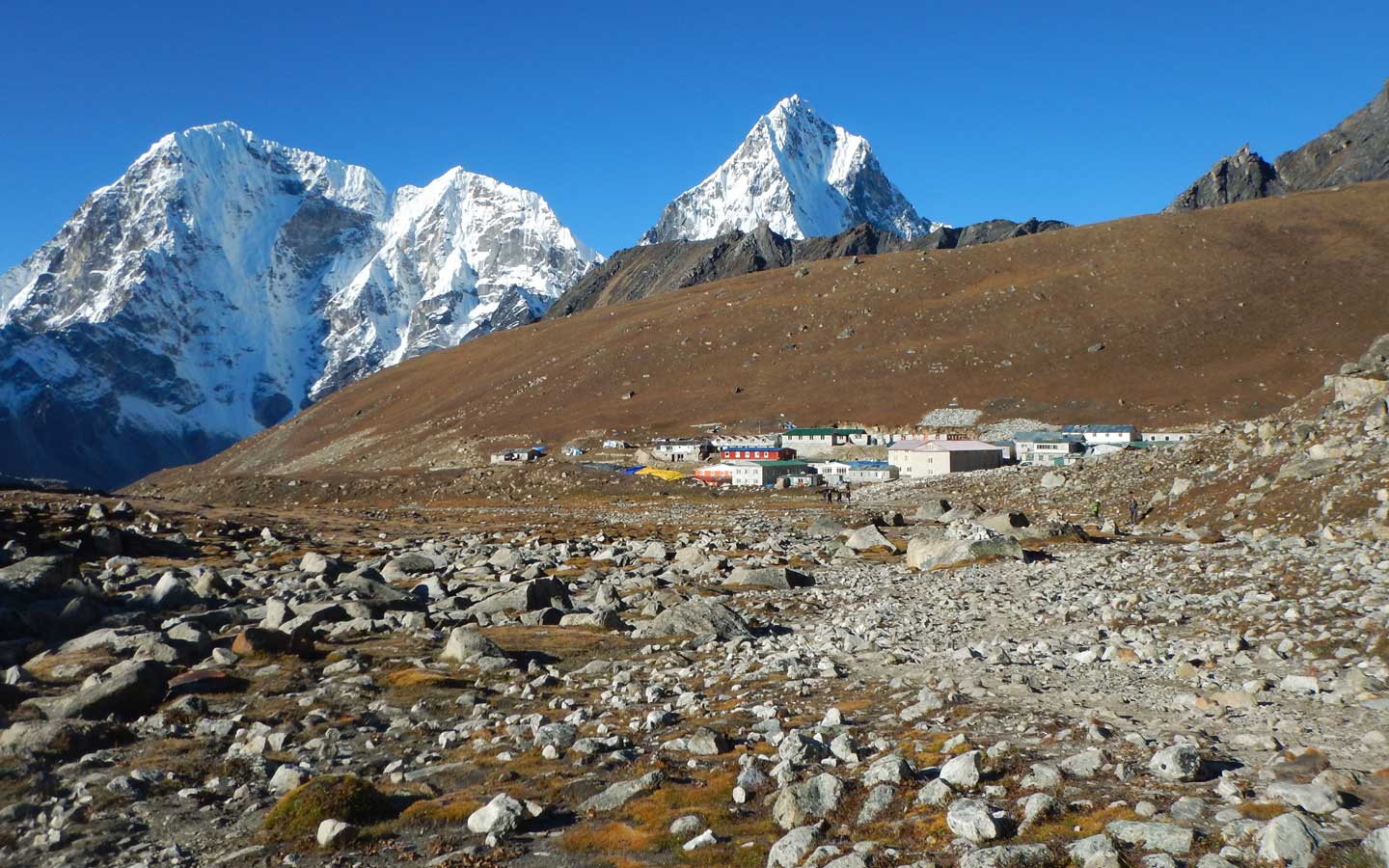
Spending 2 nights in a tea house at Dingboche you will leave for Lobuche. En route, you walk past the Khumbu glacier and icefall.
This is among the challenging part of the trek, you must be very careful to proceed forward.
En route, you walk past the memorial of the dead mountaineers where you can rest for a moment to pray for the departed soul.
Catching the finest views of Lobuche Peak on your side you walk towards the Lobuche village for an overnight stay.
Day 08- Lobuche – Gorak Shep- Everest Base Camp
Altitude: 5160 meters, EBC
Trek Duration: 7-8 hours
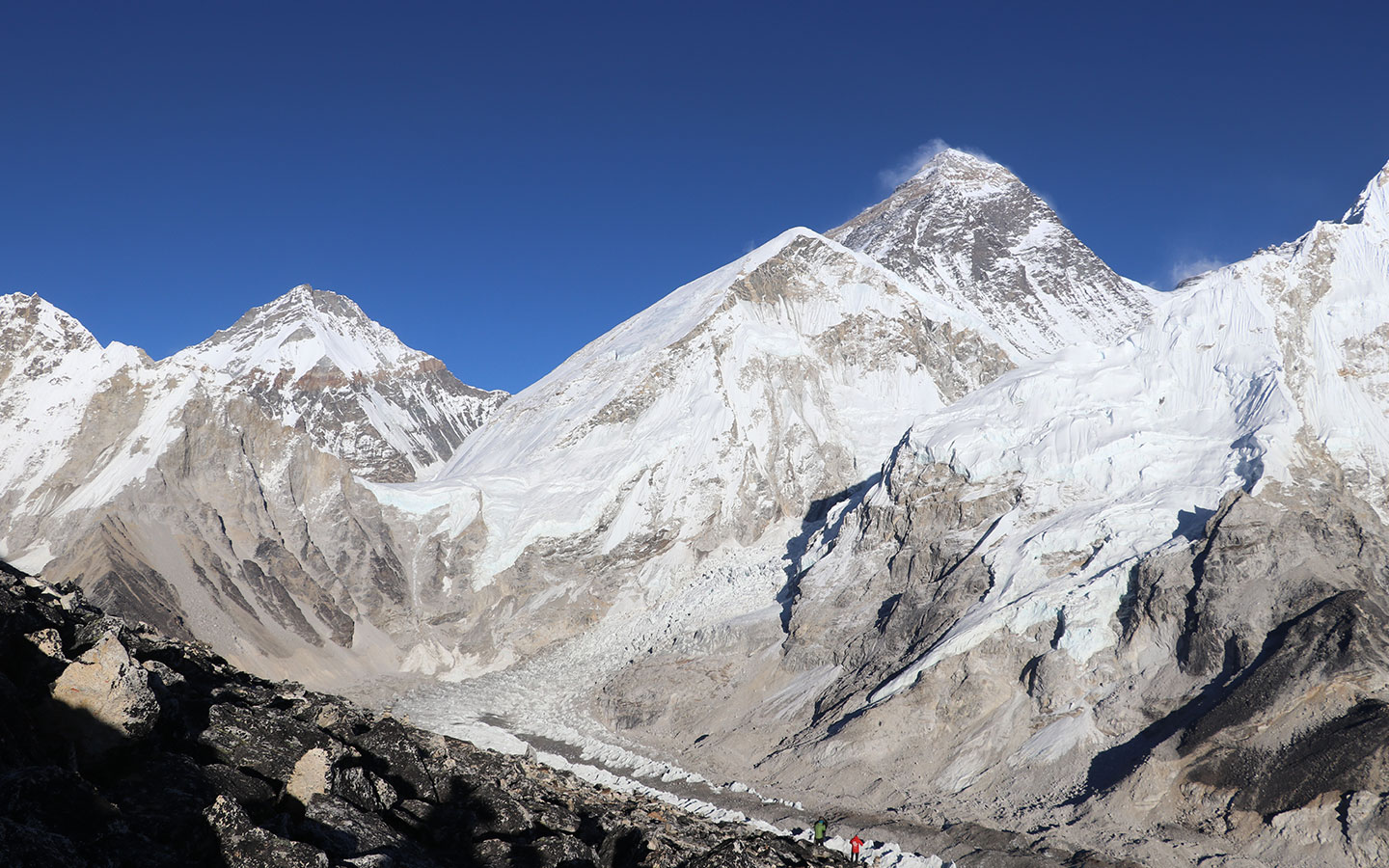
Early morning breakfast and you will leave Lobuche village to trek to Gorak Shep. Gorak Shep is the final point of the trek before you reach the Everest Base Camp.
First, you walk past the rock, adventurous terrains of the Lobuche village to reach Gorak Shep. After reaching the tea house, you will take a short rest and then hike to the base camp.
On reaching the Base Camp you will have amazing feelings. You will spend some amazing moments on the lap of Himalayas. You can click as many pictures as you like.
After enjoying the bliss of this closeness to the mountains you will return back to Gorak Shep for an overnight stay.
Day 09- Gorak Shep- Kala Patthar- Pheriche
Altitude: 5555 meters, Kala Patthar
Trek Duration: 7-8 hours
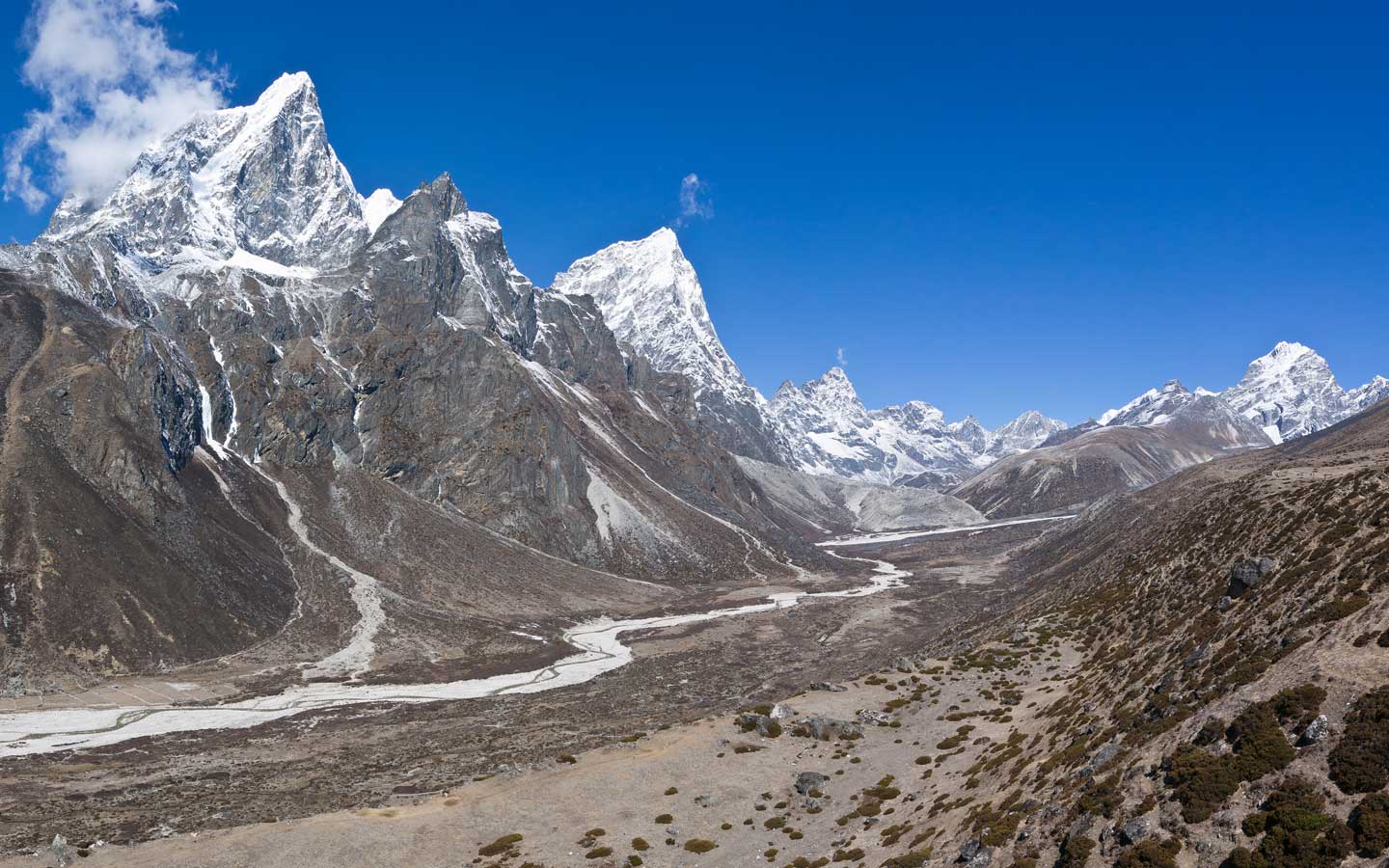
The next morning you will leave the tea house quite early in the morning and walk for 45 minutes to reach Kala Patthar. There, you can catch the best views of Mount Everest along with its neighboring peaks.
This is the vantage point for the best views of Mt Everest, Nuptse, Lhotse, and other chains of Himalayas. And, it is the final destination for your trek.
After spending some time in the vicinity of the mountains you will walk back to Gorak Shep and enjoy your lunch. Then you will descend to Pheriche village for the overnight stay.
Day 10- Pheriche – Namche Bazaar
Altitude: 3860 meters, Pheriche
Trek Duration: 5-6 hours

On this day you will get to open your eyes with the skyrocketing peaks in front of you. After breakfast, you will descend back to the Namche Bazaar where you will be spending the night. Once in Namche, you can do some souvenirs shopping if you wish to.
Day 11- Namche Bazar- Lukla
Altitude: 3440 meters, Namche Bazar
Trek Duration: 7-8 hours
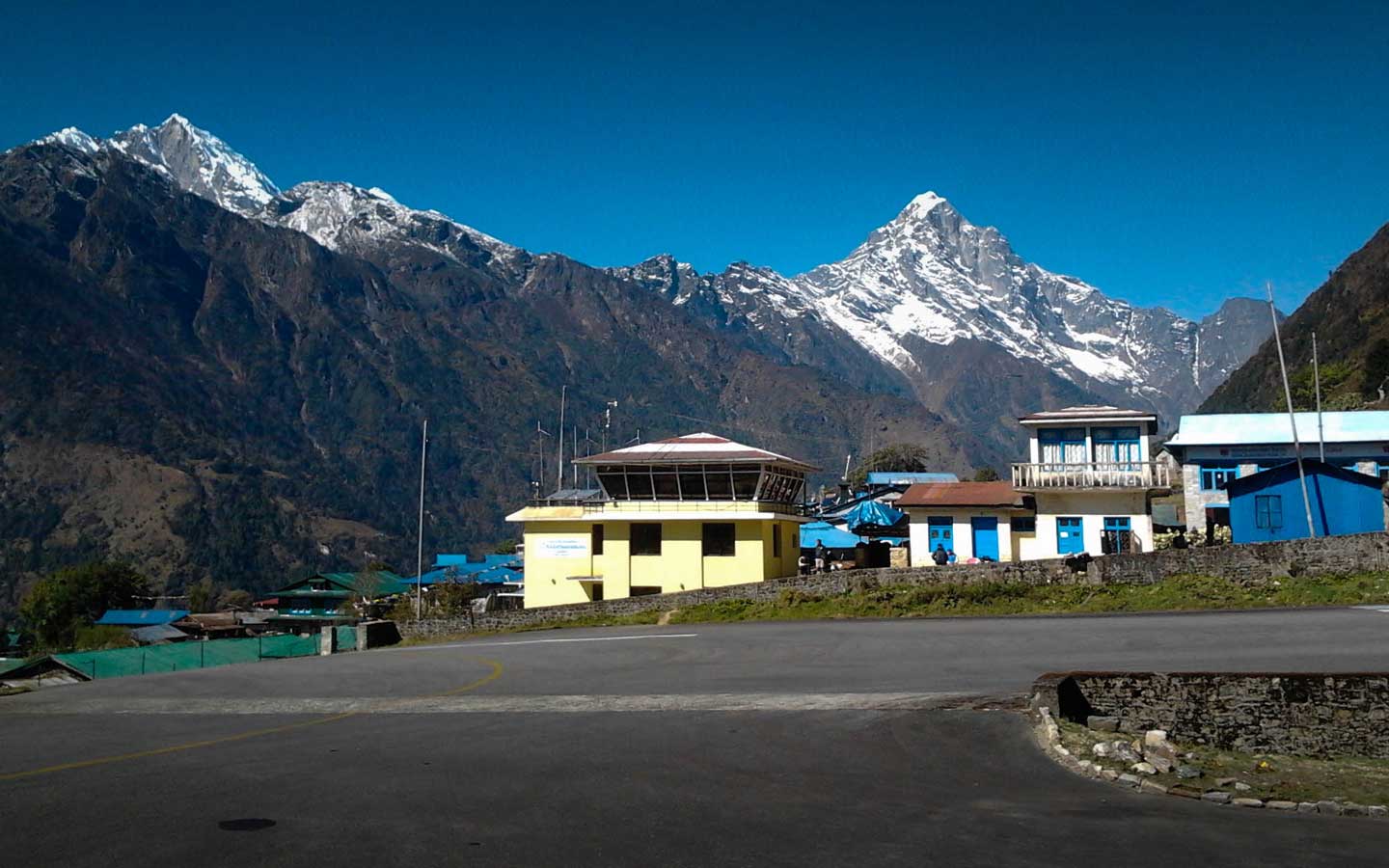
The next morning you descend past the lush forests of rhododendrons and magnolias. You will do final checking at the entry point of Sagarmatha National Park. And start trekking to Lukla, the final destination of the day.
On walking, you descend through different monasteries, temples, chortens and meet locals. Once you reach Lukla, you can book the Kathmandu flight for the next day.
Day 12- Lukla – Kathmandu
Altitude: 2,860 meters, Lukla
Flight duration: 45 minutes
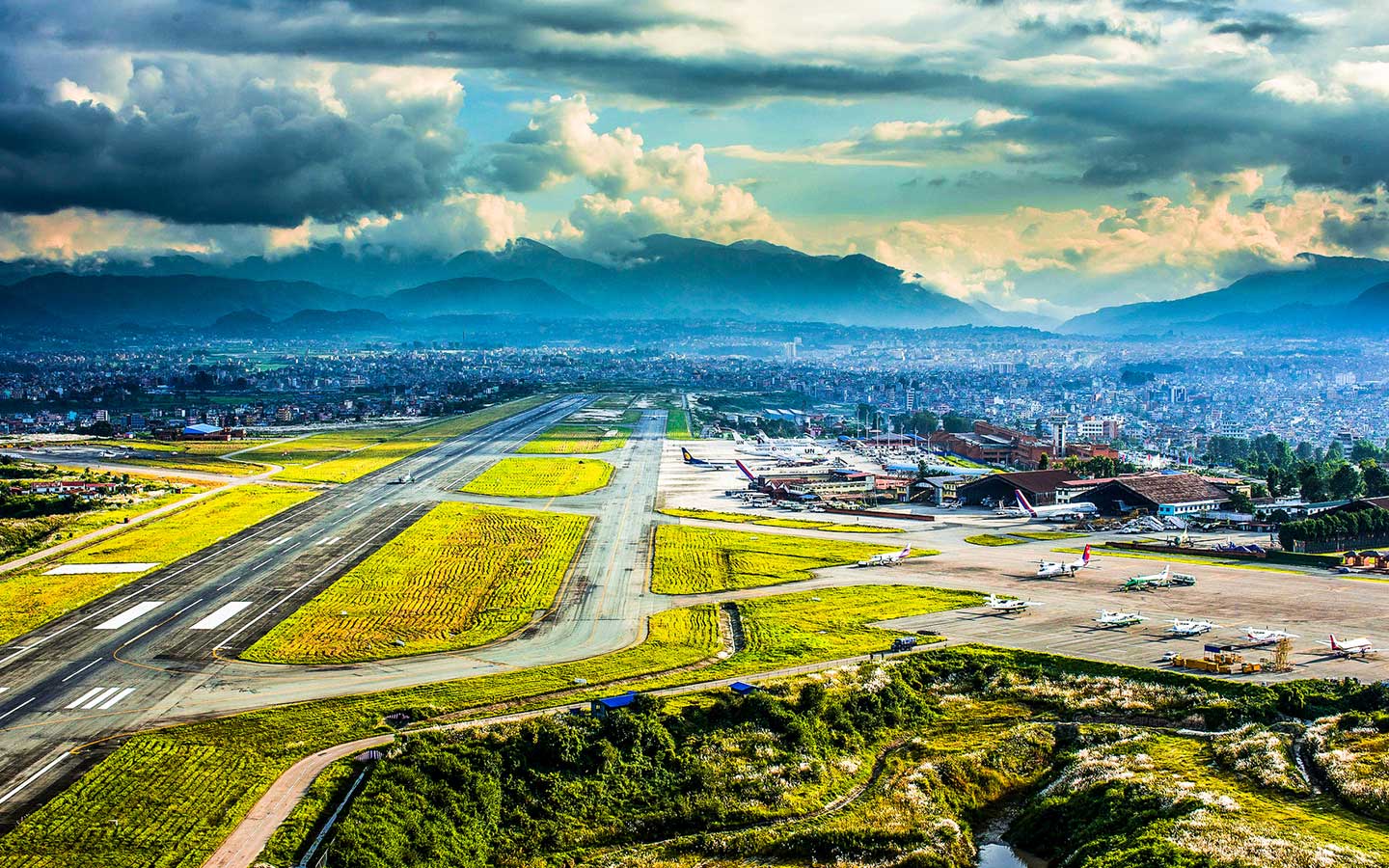
This is the final time you will review the chain of Himalayas in the Everest region. You will catch the morning flight back to Kathmandu from Lukla.
Once in Kathmandu, you can either take rest or spend your time strolling in the alleys of Thamel or Basantapur.
Note: The bad weather and wind may cause flight delays. So, you must prepare yourself for such unexpected situations as well.
Altitude Details of Everest Base Camp Trek
Trek to the Everest Base Camp is among the high-altitude treks in the world. On this trek, you will start from the low altitude and gradually ascend to the base of the highest peak in the world.
You will start the trip from Kathmandu at the elevation of 1300 meters, land at Lukla Airport at an altitude of 2860 meters. From there you slowly descend to Phakding at an altitude of 2652 meters.
Following the trail, you will ascend to the height of 3440 at Namche then 3867 at Tengboche. From there you leave for 4350 meters at Dingboche followed by 4940 meters at Lobuche.
Then to Gorak Shep, 5164 to Everest Base Camp, 5380 meters to Kala Patthar, 5555 meters. And descend back to Lukla following the trails of Pheriche 4371 meters.
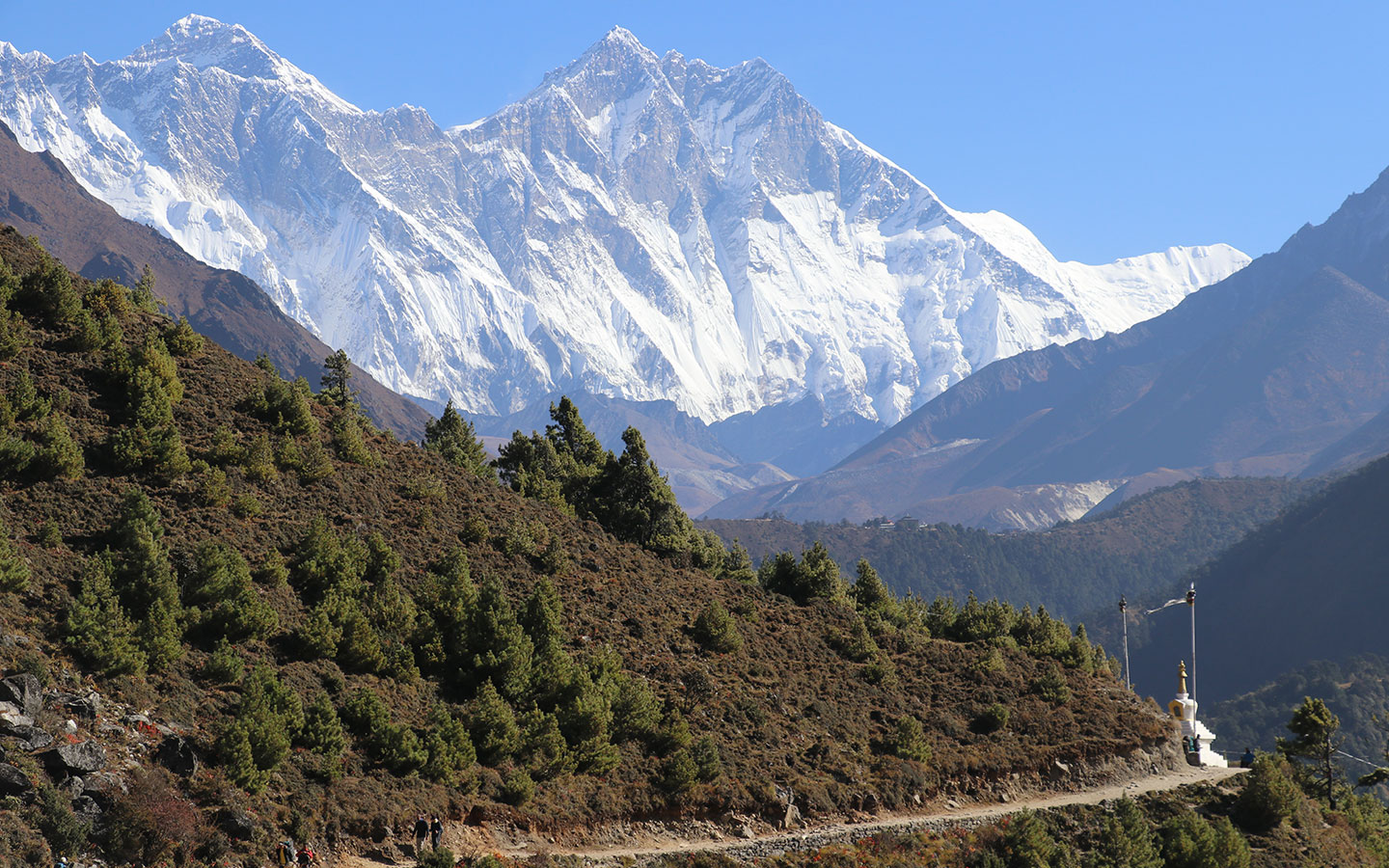
Best time for Everest Base Camp trek
Autumn (September – November) and Spring (March-May) is the peak season for Everest Base Camp Trek. Or, say it is the best time for traveling and any other treks in Nepal.
This is the finest time to explore the nook and cranny of the Everest region. Because the weather and temperature are most favorable during this time of the year.
Besides the altitudes, you will have lesser difficulty in the trek during this time of the year. You do not have to worry either of the rain, or snow, or blizzards, or leeches on the trails. You can walk free without any worries.
The crisp surrounding, sharp views, less humidity, blue skies, and the bearable temperature make Autumn and Spring the best time for this trek.
But, with the proper preparation and appropriate packing, you can opt for this trek in summer as well as winter. You must be extra careful during this time.
Everest Base Camp Trek Difficulty
This is a moderate trek on the exotic terrains of the Everest region. On this Everest region trek, you walk past several boulders and cross the stone stairs. You walk past the ice falls, cross many rivers and suspension bridges.
In the process, you climb several uphills as well as downhills. But you do not need to fear the difficulty as this trek does not demand a steep, vertical, and challenging climb.
But altitude sickness is the ultimate threat factor during the trek. The trek starts from the altitude as low as 1300, Kathmandu to Lukla at 2860 meters. And then you ascend up to the height of 5555 meters.
So, the altitude is a real challenge in this trek. So, you must not compromise on the acclimatization days you will be spending on the route.
Also, to keep yourself moving, healthy and happy you must walk slowly, take proper rest, and drink enough water. A minor muscle cramp may be threatening up in the mountains. So, be careful while walking. Have faith in yourself, pack properly this trek is completely doable.
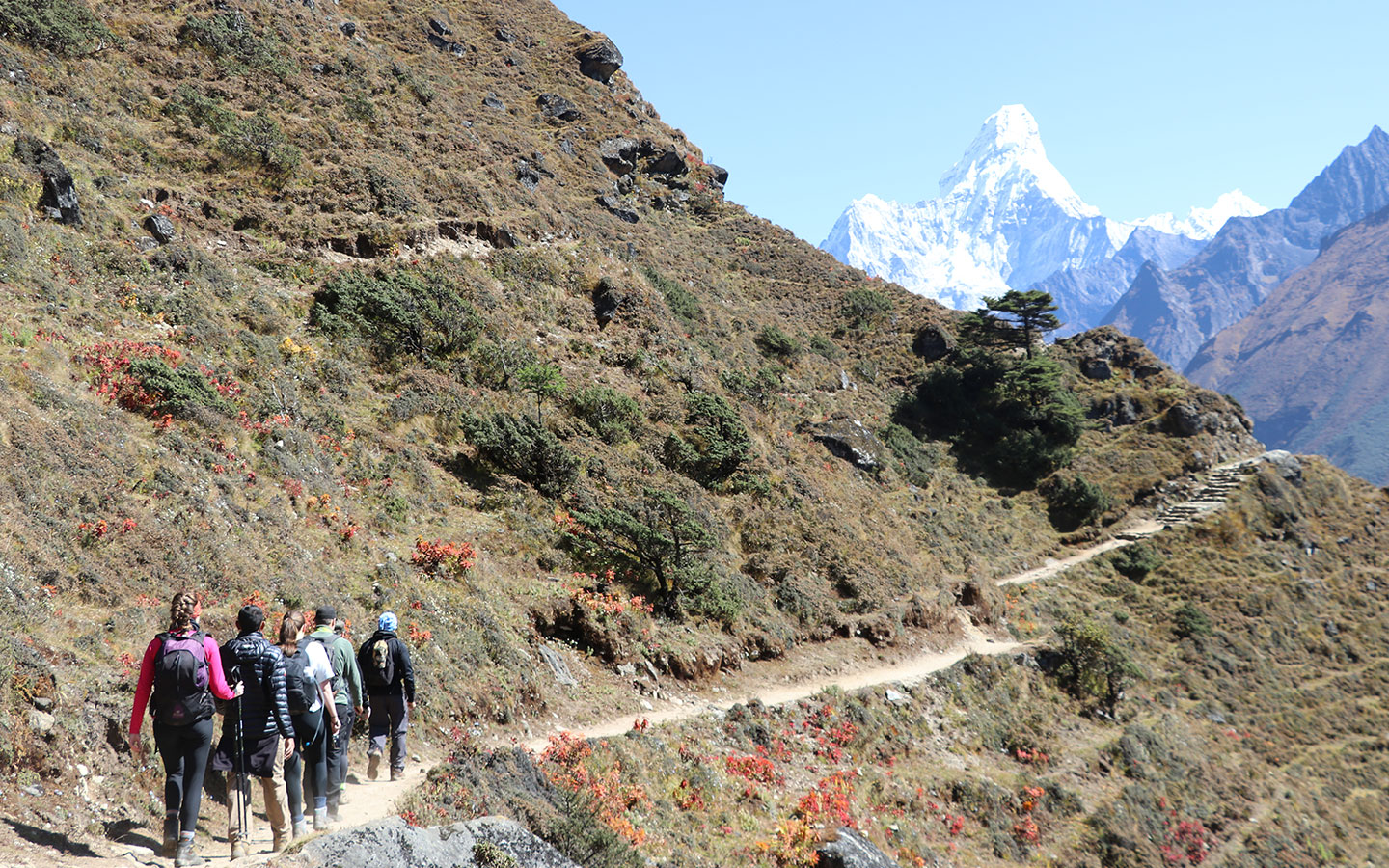
Everest Base Camp Weather and Temperature
EBC Weather and Temperature in Autumn
Autumn is the best time of the year. It has the most favorable weather and temperature for travel activities as well as other activities. During this time the days are much hotter nor they are colder. So, you will enjoy the pleasantness everywhere.
During the season the average daily temperature in the Everest region ranges from the lowest 15 degrees to maximum 20 degree Celsius. Where nights are more chilling with a drop of the temperature to -10 degrees.
The weather is the most stable than other seasons. The less humid atmosphere and the monsoon-washed surrounding are the clearest and crisp during this season. You will get the clearest views of the mountains and the landscape under the serene blue sky.
Also, there is less chance of rain and the weather changes during this time of the year. Such an amazing time you will have in the Everest region.
EBC Weather and Temperature in Spring
Spring is the time of wildflowers and the soothing melodies in the forests of the Sagarmatha National Park. This is the other best time to trek in the Everest region before the arrival of monsoon in Nepal.
The time is among the hotter months of the year. But the daytime temperature remains from lowest 17 degrees to the highest 25 degrees in the Everest region. While the nights and the mornings are chilling with the temperature to -15 degrees.
This is the time when the forests bloom in rhododendron and magnolia everywhere. You get to see different flora and fauna transforming into a new life after the end of winter months in the region.
There is the least chance of rain and snow. Plus, the lowest precipitation in the season offers the sharpest views of the chain off Himalayas. Alongside with the lush vegetations, and the exotic mountainside settlements.
Also, the weather remains stable during this time so, you do not have to fear much.
EBC Weather and Temperature in Summer/ Monsoon
Summer is the season when the waterfalls and the cascading rivers come into life. With the rainfall, the trail is washed away and you get to walk in the lush vegetation.
The days are quite hot and bearable during this time in the Everest region. The average daytime temperature is 18- 25 degrees whereas nights and mornings are around -15 degrees.
You have the high chance of getting the clearest views of the mountains and the landscapes after rainfall. However, this is among the humid month so there are high chances that the fog covers the crisp views of the mountains.
Plus, you may go through leech bites and slippery trails if you trek during this time. So, you must plan your trek carefully if you are choosing summer treks.
EBC Weather and Temperature in Winter
Winter is the month of snow and the whole surrounding turns into winter wonderlands. If you love snow then you can choose Everest Base Camp Trek in winter. However, it is much colder in the region during this time.
The daytime temperature will be around 4 degrees whereas in the night the temperature may drop around -15 degrees. That means you may feel much cold in nights and mornings. So, it is a good idea to carry along a sleeping bag to warm yourself.
Plus, there is a high chance of storms, blizzards, and dense fog obstructing the surrounding and the weather. So, if you plan to trek during winter you must go prepared for such unpredictable weather conditions.
Note: The weather in mountains can often go unpredictable despite the best season you are trekking. So, before you opt for this trek you must prepare yourself physically as well as mentally for anything that may occur along the way.
Plus, it is a good idea to have some spare days if in case your flight gets delayed or canceled due to bad weather.
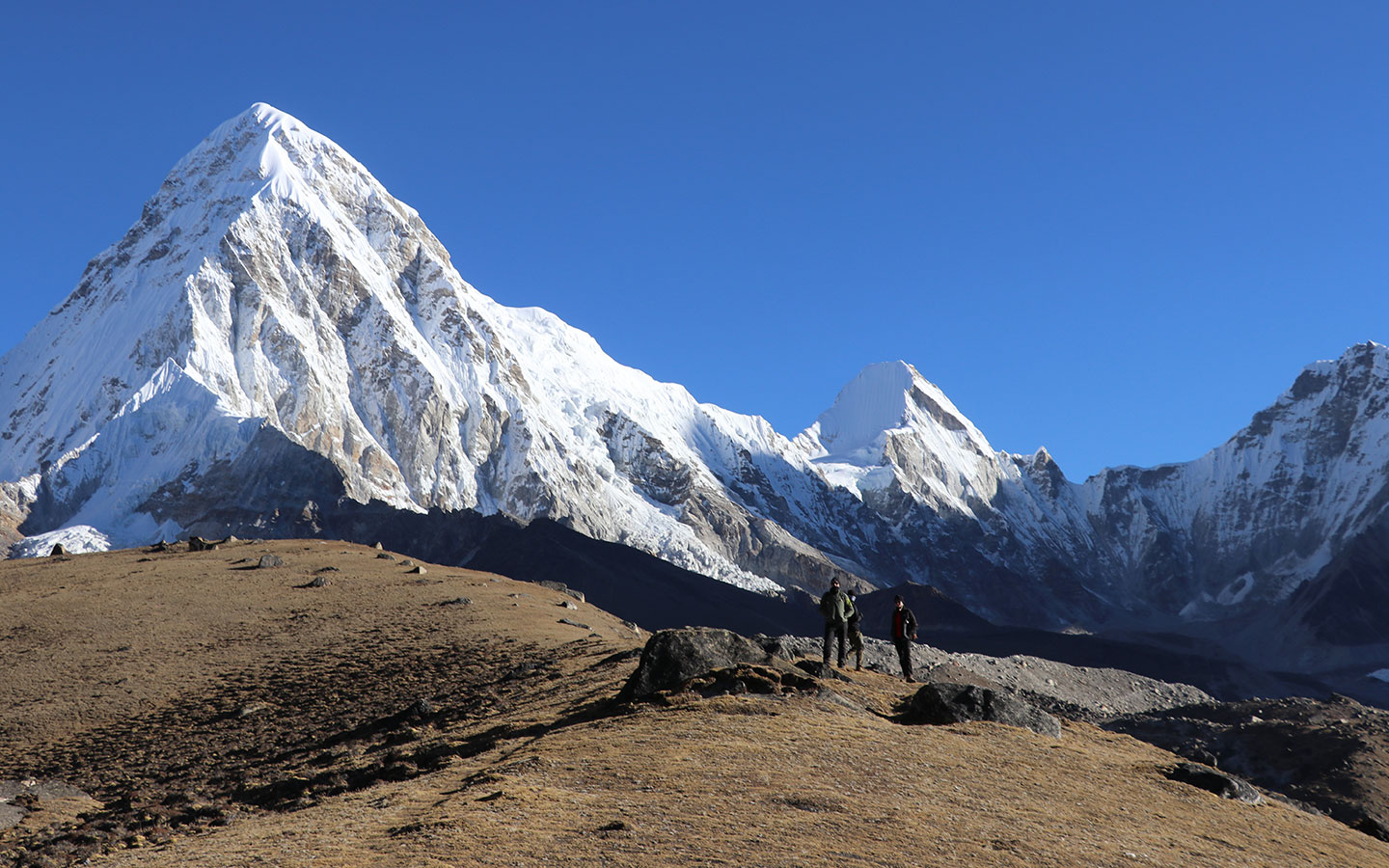
Altitude Sickness during EBC Trek
Everest Base Camp trek takes you to the foot of the highest peak in the world Mount Everest. On this trek, you will ascend to the greatest height of 5555 meters at Kala Patthar. Whereas you start the trek for the altitude as low as 1300 meters in Kathmandu. So, there is a high chance of suffering from altitude while on the trek.
As you ascend higher you may feel difficulty in breathing, feel nausea, sleeplessness, lethargy, and loss of appetite. If you notice such symptoms you must immediately stop ascending and take rest.
You should consult your guides about your problem and seek immediate treatments. In such a case, you must descend and take rest until you feel healthy and fit to ascend further. In severe cases, you can take Diamox to prevent the problem from getting worse.
To prevent the risks of altitude sickness you must spend enough acclimatization days during the trek. Plus, you must be careful while ascending to higher altitudes in a single day.
And you must check your food and drinks as well. You must keep yourself hydrated and avoid the consumption of alcohol while in higher altitudes.
Permits for Everest Base Camp Trek
Permits are a mandatory thing you must have to enter or trek in any trekking regions of Nepal. There are various checkpoints in the different parts of the trekking route. There you need to verify your permits before entering the region. So, Permits are the must-have before you start your trek.
During Everest Base Camp trek, you will walk in the Everest region and enter the Sagarmatha National Park. So, you need two different permits for this trek. It includes:
Local Area Entry Permit: USD 10
Sagarmatha National Park Entry Permit: USD 20
To receive the permit, you have to submit a photocopy of your valid passport and a passport size photo at Nepal Tourism Board, Kathmandu. Or, you can even get them at the entry point of Sagarmatha National Park, Monjo.
Also, you may wish to escape the Lukla flight and start the trek from Jiri after 7 hours drive from Kathmandu. For this, you need to get an additional permit to enter Gauri Shankar Conservation Area. You can buy it at Kathmandu or buy it at Shivalaya, Jiri.
Gauri Shankar Conservation Area Permit: USD 20 per person.
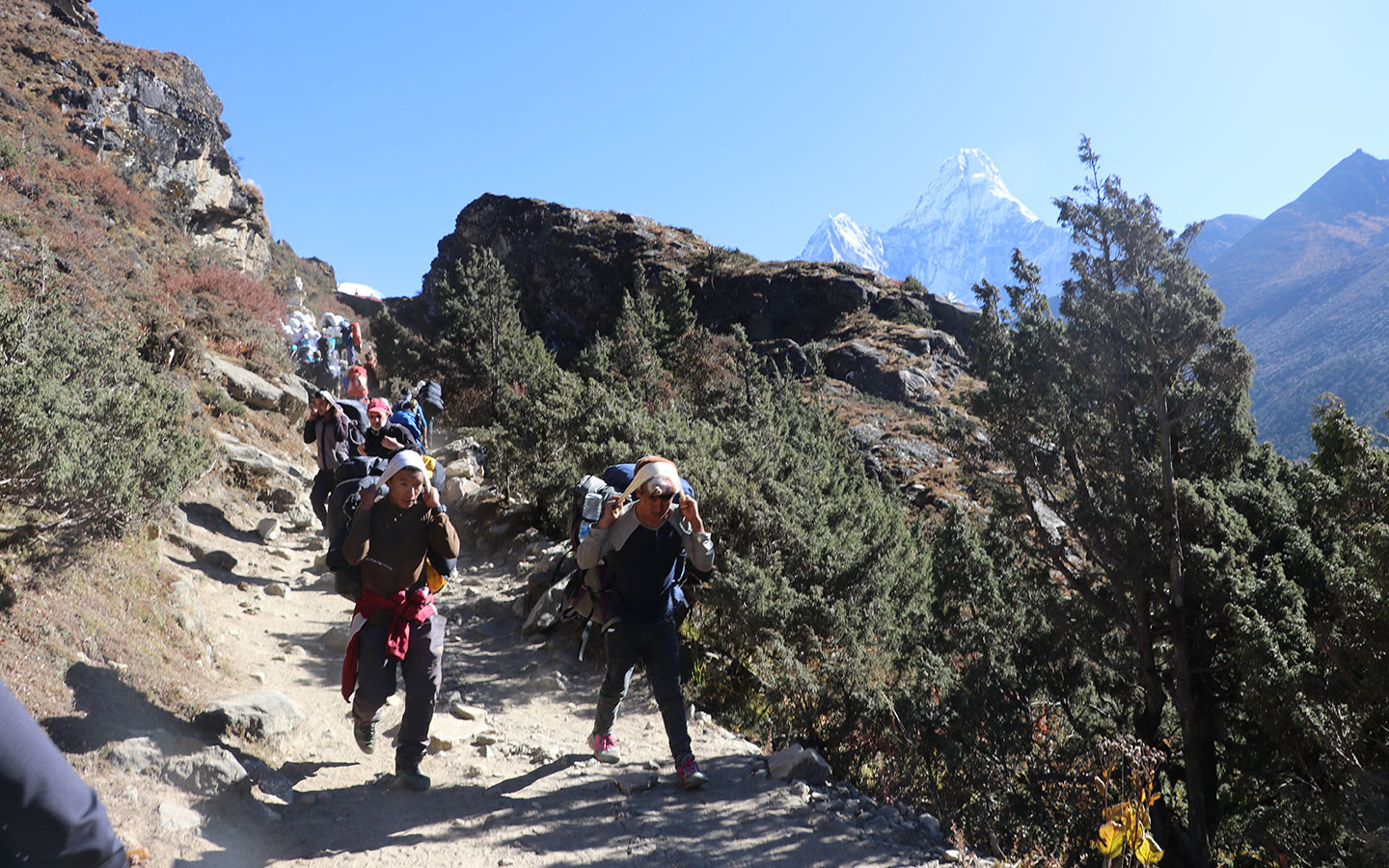
Hiring Guides and Porters
Hiring guides and porter for the trek is not compulsory. But there are different perks of walking with them.
They take care of you, guide you through the trails, notify you about the changing weather and temperature of the places you will be trekking on the day.
Porters help reduce the weight of your backpacks. So, you can walk free and enjoy everything on the trek. And they will make it easier for you to communicate with the locals and know about them.
And they are your savior if in case you face some problems on the trails or you notice the symptoms of altitude sickness. In general, you can hire a guide for USD 20- 25 per day whereas a porter costs around USD 15-20 per day.
Most importantly they help you pre-book the room and arrange your food of choice without any obstacles. They will be every time on your help during the whole trip.
To book them you can either hire them through the travel companies or hire local guides to trek with you.
Travel Insurance for EBC trek
Travel Insurance is a must for every type of treks and travels. It ensures your safety as well as the safety of your belongings. You can travel everywhere once you ensure yourself with a reliable travel insurance policy.
Everest Base Camp trek is among the high-altitude treks in the world. It is an adventurous trek in the Everest region but dangerous at the same time. There are many difficulties and risk factors during the trek to Everest Base Camp.
In such high altitude, dangerous, and adventurous treks travel insurance is a must. Sometimes you may get some health problems for which you may need medical evacuations. In such case of emergencies, your travel insurance comes handy.
So, before you come trekking in the Everest region, get a reliable insurance policy that covers up to the height of 6000 meters and offers immediate helicopter evacuations in case of emergencies.
You cannot get the insurance policy in Nepal, so before you come insure yourself with the most convenient policies. Many trekking companies do not accept if you do not have travel insurance. So, do not forget to ensure and bring policy papers while coming to Nepal.
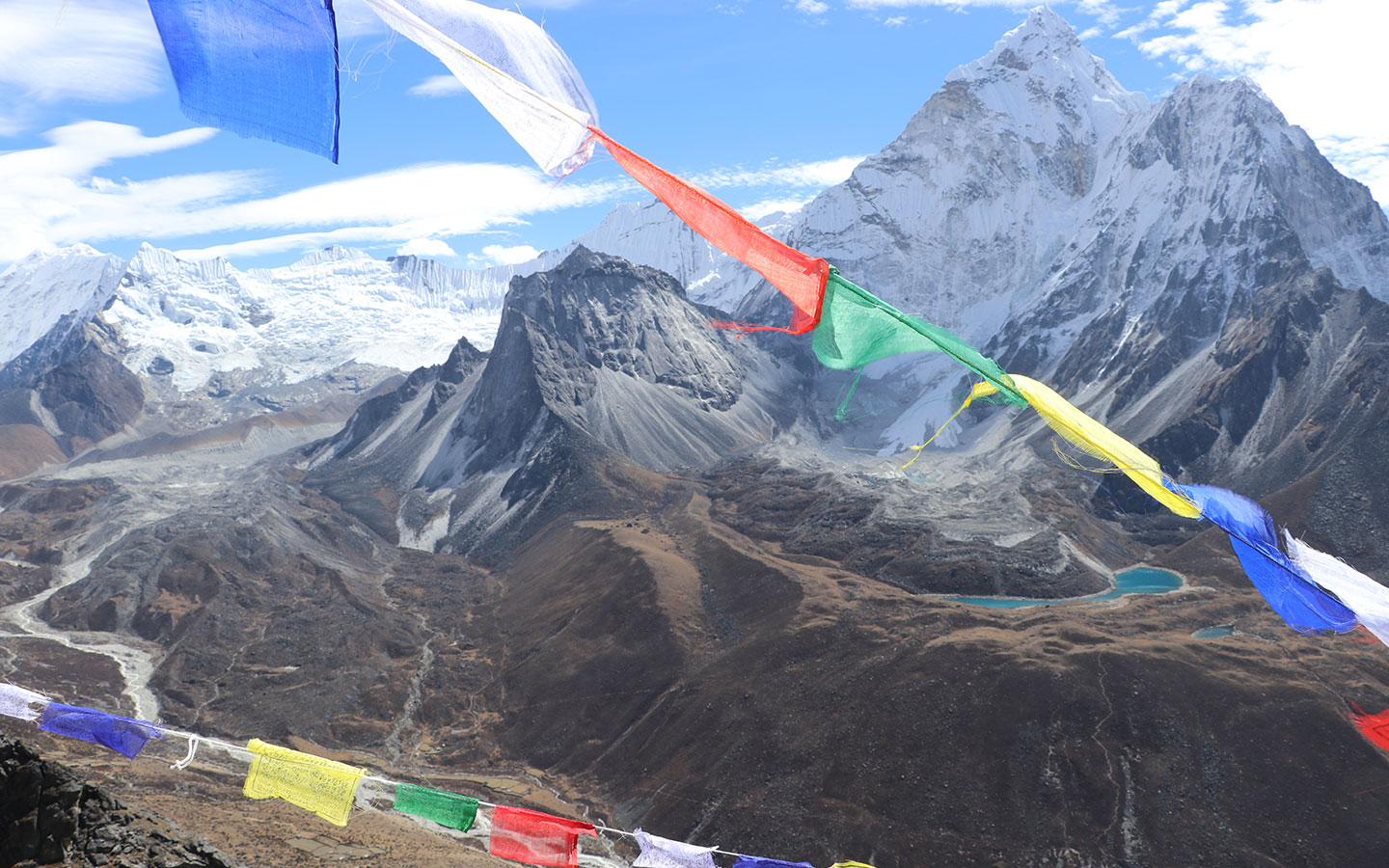
Everest Base Camp Trek Cost
The Everest Base Camp trek cost depends on various factors. It varies on whether you are traveling with a trekking company or going on solo treks.
The total cost of the EBC trek depends on the cost of permits, the cost of food/drinks and accommodations during the trek. Plus, it depends on the cost of hiring guides and porters, the routes you choose, the season of your treks, and so on.
On average the EBC trek costs around USD 1100- 1300 per person depending on these various factors.
Also, you need to pay for hot water, to charge your electronic gadgets. Or, you may like to tip your guides and porter or you may want to donate some money on the local school, temples, or monasteries. These various factors determine the cost of your trekking.
However, trekking in Nepal is quite cheap than in other treks in the world. So, you do not need to worry much about the budget you will be spending on the trek.
To reduce this cost, you can do solo treks, or you can choose to trek in off-seasons.
People and Culture during EBC trek
Everest region is the land of Sherpa. As you enter the region you will encounter different dispersed settlements of the Sherpa people. You will get to walk past the typical houses, farms and the pastures of the denizens of the mountainsides.
On knowing these people better, you will know about the great influence of Tibetan culture and Buddhism in their lives. Their food, clothing habits reflect the mountainside lifestyle.
Plus, to know more about their culture and religions you can pay a visit to their place of devotion and faith. There are many monasteries and gompas with chortens and the hanging prayer flags. It will give deeper insight into the ethnic culture of these Sherpas.
If you manage to trek to this region in October- November you can become a part of the biggest celebration of the region. The region shines in the colors of Mani Rimdu festival in the Tengboche monastery.
During your acclimatization days, you can visit villages like Khumjung, Khunde and spend time in the local school built by Sir Edmund Hillary and the local health posts. Plus, you can do some shopping in the local market of the Everest region- Namche Bazaar.
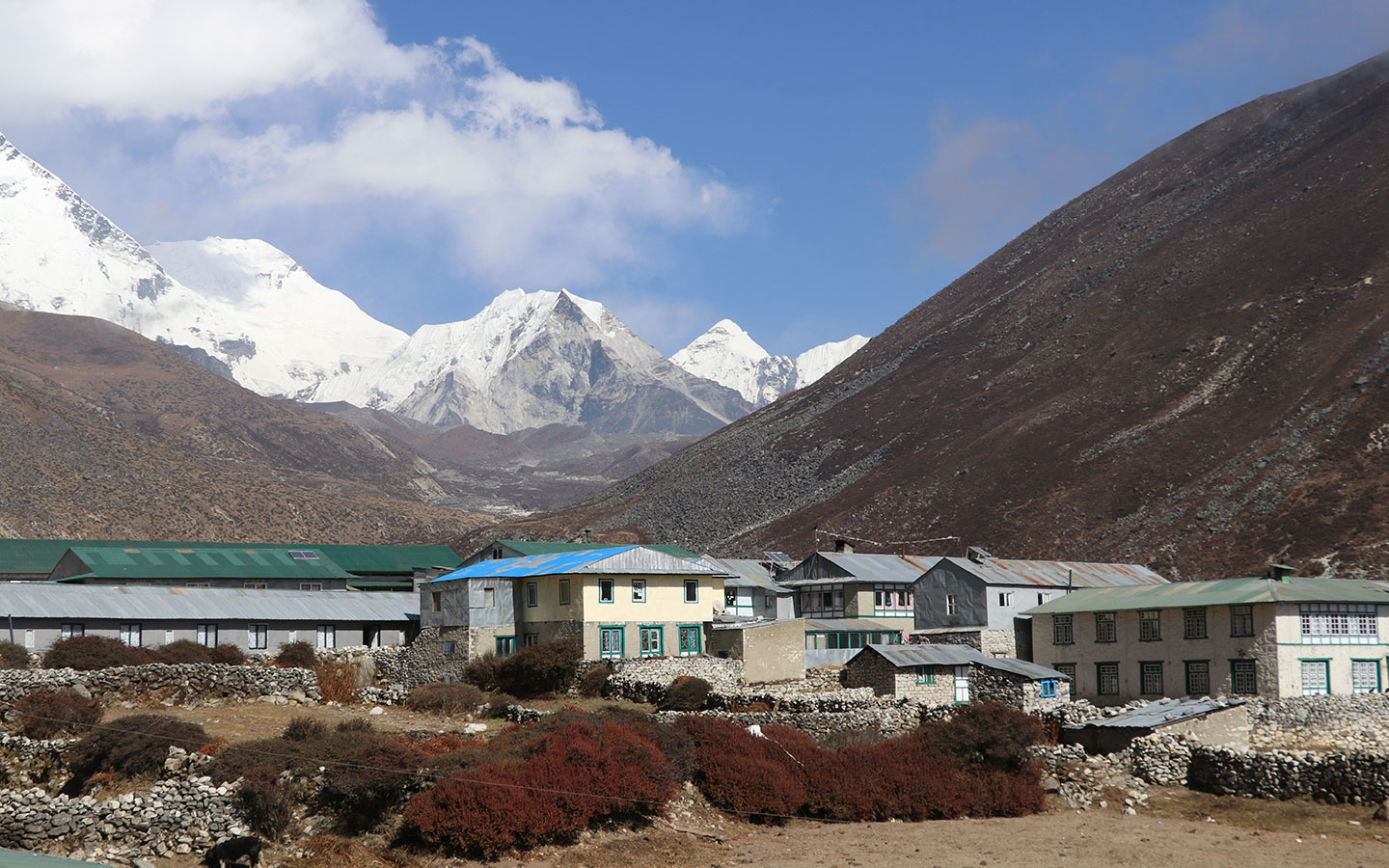
Tips for Everest Base Camp Trek
- Since altitude is the major issue in this trek, do not rush. Take proper acclimatization. Do not jump into high altitudes in a single day. Walk slowly, ascend gradually.
- Drink plenty of water and food rich in carbohydrate. You need to be fit and have good stamina to walk further. You can also drink as much garlic soup as you can. It keeps your blood thick and eases respiration.
- If you are trekking in peak season, do not forget to pre-book the room and food. You may have to compromise in the dining room if you fail to pre-book the room.
- Carry along the water purification tablets ao purifiers. Instead of buying expensive water bottles you can use the local water by making it drinkable.
- Mountain weather is quite unpredictable. It changes in every hour. A sunny morning may bring dark clouds with thunderstorms in the evening. So, before you leave it is good to pack wisely. You should go prepared for any weather changes.
- Mountains in the evening may show some unusual weather conditions. So, it is good to start early in the morning and reach your destination for the day before it gets dark.
- Whichever season you are trekking it is always a good idea to carry along the 4-season sleeping bag. And a waterproof backpack.
- If you are a solo trekker do not forget to carry along a trekking map and get necessary permits before you start the trek.
EBC Trek after 2015 Earthquake
The Gorkha earthquake of April 2015 affected the Everest Base Camp Trek route. Due to the avalanche in the mountains, many trekkers lost their lives.
Many tea houses were completely devastated. The trails blocked with the massive boulders and rocks. The route became unsafe for trekking because of various factors.
However, the place and the route are already restored. The tea houses are newly constructed following the earthquake resistant techniques. The boulders and rocks are cleared from the route. There are lesser risks of an avalanche.
The locals of the region in coordination with the government and trekking associations have already made the place and route much safer for trekking.
Plus, the number of teahouses has also increased in the region. So, you do not have to worry to trek in the Everest Base Camp. TAAN has declared and re-opened the place for trekking.
So, the Everest region is completely safe to trek despite the 2015 Gorkha earthquake.
EBC Helicopter Trek
If you are willing to do the trek but do not have enough to join the 14 days trek to Everest Base Camp then do not worry. You can opt for the Everest Base Camp Helicopter trek. On this tour, you will walk from Lukla to the Everest Base Camp/ Kala Patthar. And, on returning back you take a helicopter flight directly from Base Camp to Kathmandu.
Or, you have another option for Everest Base Camp Heli Tour where you get to explore the diverse topography and lifestyles of the Everest region in around 4 hours. On this tour, you fly in a helicopter from Kathmandu to Lukla then to Everest Base Camp. On returning you will enjoy a warm meal at the Everest View Hotel and then fly back to Kathmandu.
This tour is the best option for you if you are either short on time. Or you are unable to trek in the rugged terrains of the Everest region but still want to be at the base of the world’s highest peak.
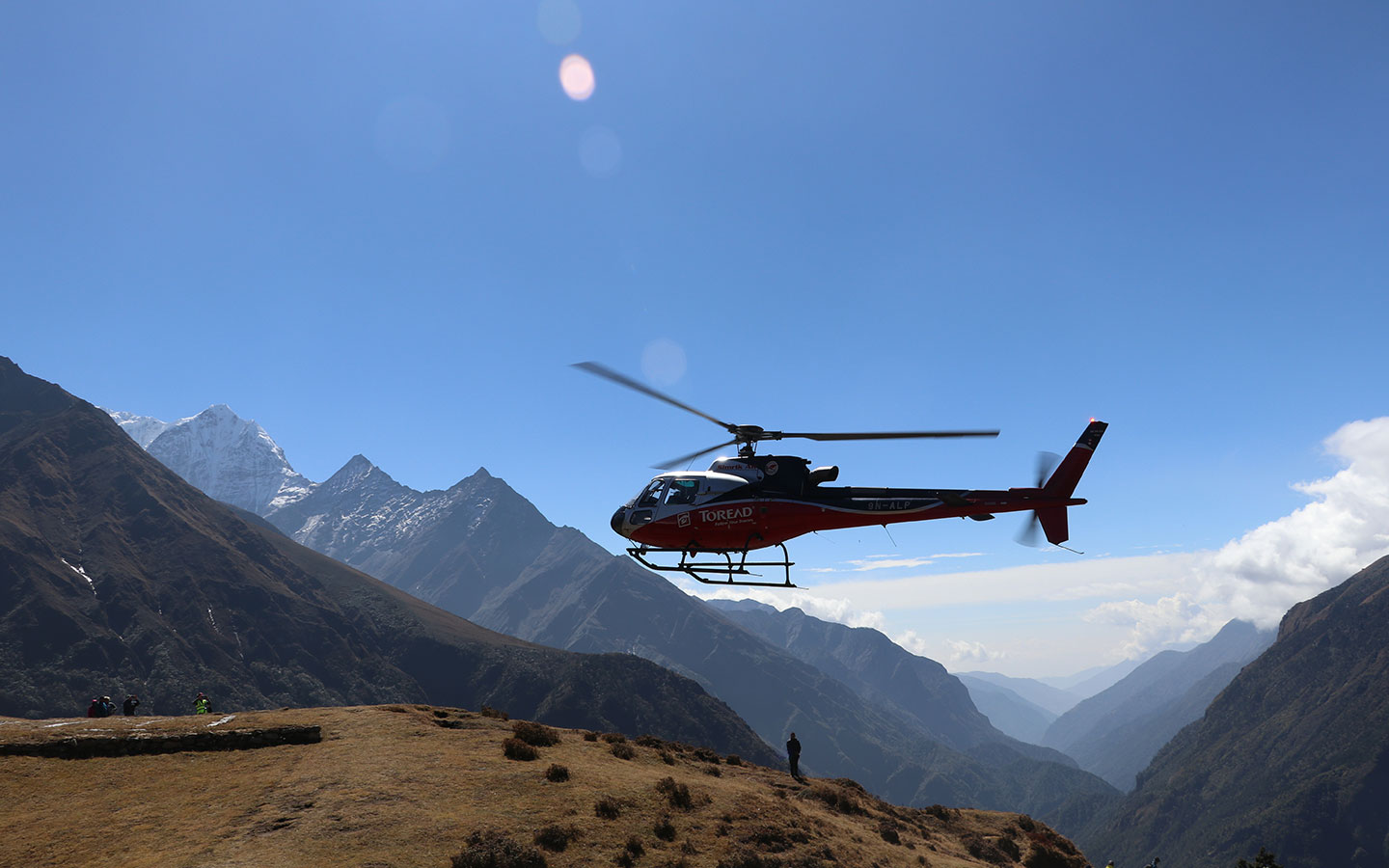
Side Trips to EBC
Besides following the classic Lukla route to the Everest Base Camp you can also use some side route. And enjoy the extra views and adventures in the trek along with your trek to the base camp.
You have two different alternate routes to reach the Base Camp.
Gokyo Valley Lake trek
On this trek, you walk towards Gokyo valley from Lukla village. This is among the less crowded and peaceful trails in the Everest region.
On this route, you get to explore five different glacial lakes of the Gokyo valley. Also, you will hike to Gokyo Ri, to catch the finest views of the Everest but, for a different perspective than from Kala Patthar.
Exploring the exotic, and off the beaten trails of the Gokyo valley, you will then trek to the Everest Base Camp.
Jiri Everest Base Camp Trek
This is a classic route to reach the base of the giant peak of the world, the Everest. The route follows a drive from Kathmandu to Jiri and then trekking throughout the trail. If you choose this route you will follow the footsteps of Sir Edmund Hillary and Tenzing Norgay Sherpa.
This is the best alternative for those who wish to escape the Lukla flight. This route takes you through different villages of Brahmins, Chhetris and other ethnicities before you reach Lukla village. From Lukla, you follow the ideal route to Everest Base Camp.
Lastly,
Everest Base Camp trek 14 days promises you the closest and best views of Mt. Everest along with its neighboring peaks. On this trek, you get to encounter the typical Sherpa people of the region, explore their distinct lifestyles.
You get to walk past several scattered Himalayan settlements, monasteries, and chortens. Also, cross numerous suspension bridges across the Dudh Koshi river.
With a trek of 14 days, you get to receive that amazing feeling of resting on the lap of Mount Everest, the highest peak in the world. A dream destination for many, isn’t it?
